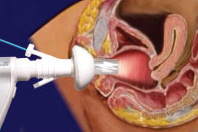
Photo from wikipedia
Abstract Aim: The aim of this study is to evaluate the quality of data on endometrial (EC) and ovarian, fallopian tube, peritoneal, abdominal or pelvic cancers (OC) registered in the… Click to show full abstract
Abstract Aim: The aim of this study is to evaluate the quality of data on endometrial (EC) and ovarian, fallopian tube, peritoneal, abdominal or pelvic cancers (OC) registered in the Swedish Quality Register of Gynecologic Cancer (SQRGC). Method: A random sample of 500 patients was identified in the SQRGC and their medical charts were reviewed for re-abstraction of 31 selected core variables by an independent validator. The data in the SQRGC and the re-abstracted data were compared. The data were collected from 25 hospitals evenly distributed throughout Sweden. The main outcomes were comparability, timeliness, completeness and validity. Coverage was compared with the National Cancer Register (NCR). Timeliness was defined as the speed of registration i.e. when patients were registered in the SQRGC relative to date of diagnosis. Internationally accepted coding systems for stage, grading and histologic type were used ensuring a high degree of comparability. Correlations were estimated using Pearson’s correlation coefficient and Cohen´s kappa coefficient. Results: The completeness was 95%. The timeliness was 88–91% within 12 months of diagnosis. The median degree of agreement between re-abstracted data and data in the SQRGC was 82.1%, with a median kappa value of 0.73 for ordinate variables and a median Pearson’s correlation coefficient of 0.96. The agreements for the type of surgery were 76% (95% CI 70–81%; kappa 0.49) and type of primary treatment 90% (95% CI 87–94%; kappa 0.85) in OC and in EC 88% (95% CI 84–93%; kappa 0.84). The agreements for the FIGO stage were in OC and EC 74% (95% CI 68–80%; kappa 0.69) and 87% (95% CI 82–91%; kappa 0.79), respectively. Conclusions: The data in the Swedish Quality Register for Gynecologic Cancer are of adequate quality in order to be used as a basis for research and to evaluate possible differences in treatment, lead times and treatment results.
Journal Title: Acta Oncologica
Year Published: 2018
Link to full text (if available)
Share on Social Media: Sign Up to like & get
recommendations!